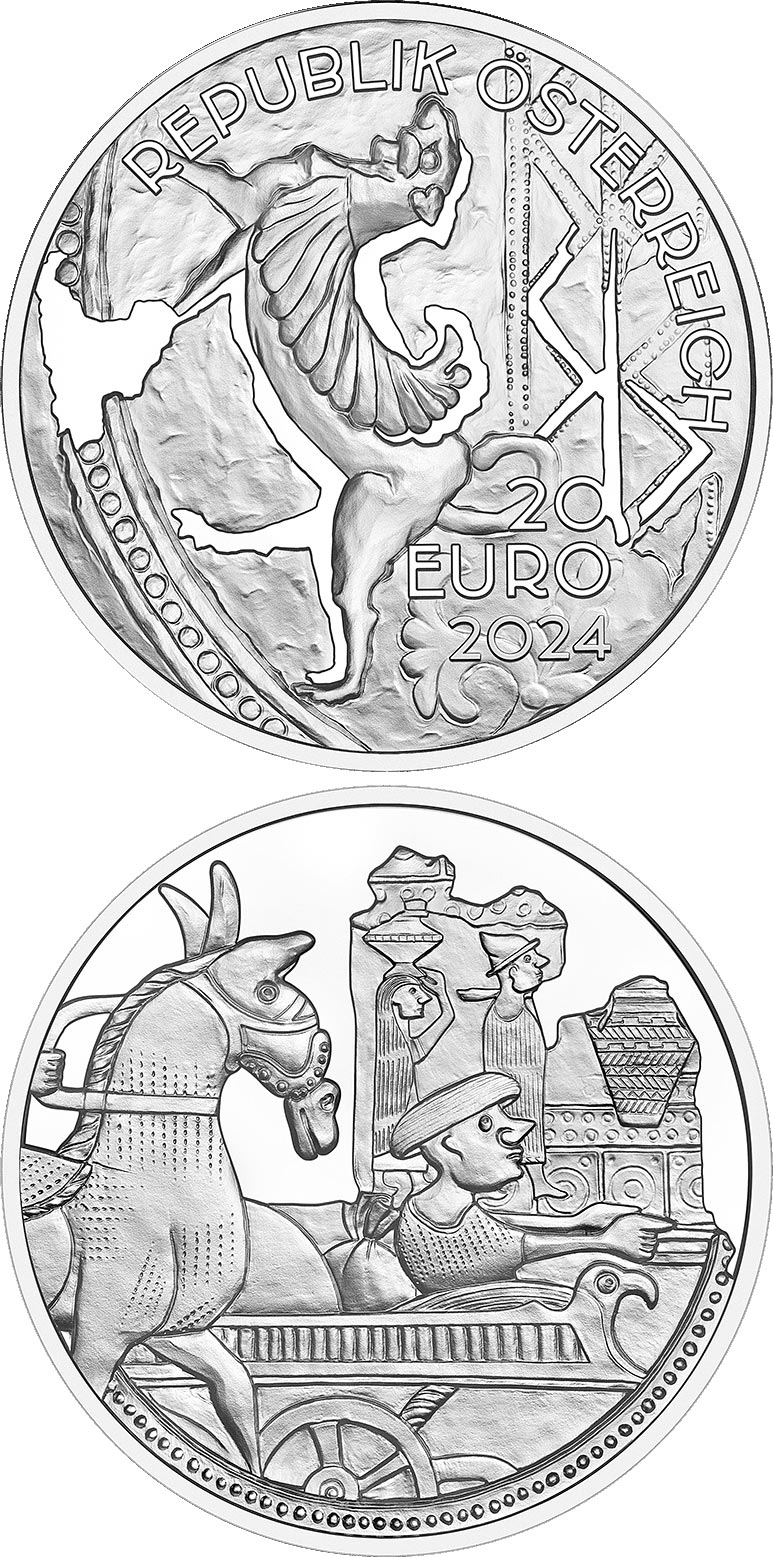20 euro - Salt Trading

Salt Trading, the second coin in The White Gold of Hallstatt series, focuses on the second step in the lucrative business that made the picturesque lakeside town a vibrant trading hub and cultural capital during the Bronze Age.
The discovery of a prehistoric burial ground in Hallstatt in the nineteenth century showed that as well as being inventive and enterprising, the people of Hallstatt were clearly open to new things, including goods. Foods, tools and all kinds of exotic treasures found their way to the Salzkammergut region, including honey-coloured amber from the Baltic, greenish glass vessels from northern Italy or western Slovenia and sword pommels made of ivory.
These exotic treasures came to Hallstatt through the networks developed to export the town’s ‘white gold’ in all directions, including far beyond the Alpine region. Hallstatt is thought to have supplied salt to half of Central Europe as well as to distant places on the North Sea, Baltic Sea and the Mediterranean.
Transporting the salt was often a precarious business as human obstacles in the form of brigands and even pirates had to be braved in addition to the rugged mountain terrain of the the Salzkammergut region around Hallstatt. However, the salt trade also brought innovations such as a man-made system of roads that connected Hallstatt with the neighbouring areas to the north and south.
A mythical creature from the Mediterranean region features on the obverse of Salt Trading. The depiction comes from a vessel discovered in the prehistoric burial ground of Hallstatt. The background boasts a design from the Hallstatt culture. On the coin’s reverse, a collage shows a trade scene in which goods are transported in sacks on a horse-drawn cart and in decorated vessels. The figures are inspired by artistic depictions found on bronze vessels from the Iron Age, known as situlae.